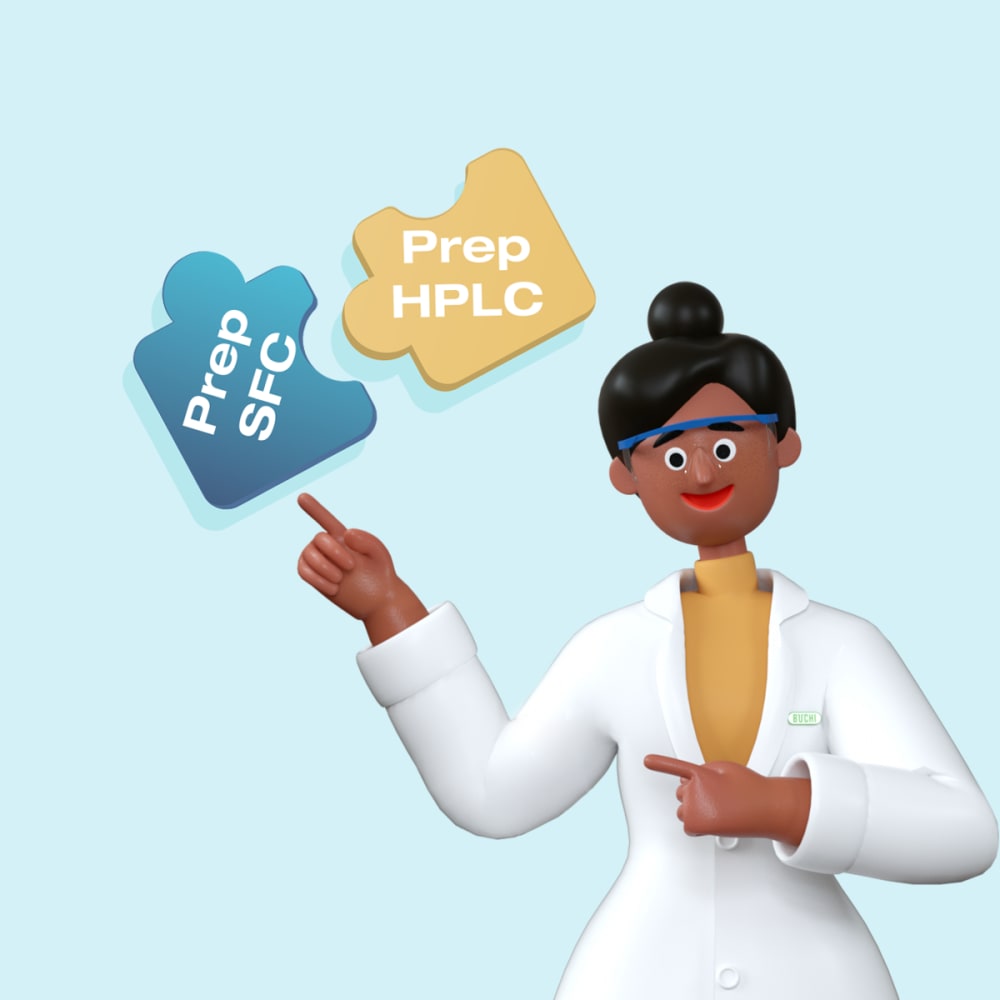Is Your Lab Maximizing its Chromatography Potential? Why Both Prep HPLC and Prep SFC Matter

Hello, and welcome back to the Colorful Researchers’ blog!
For this post, I would like to explore the balance of prep HPLC and prep SFC in modern chromatography. In my last post, I discussed using SFC to purify enantiomers. SFC’s capabilities with chiral molecules are well documented; in fact, SFC has become synonymous with chiral chromatography. Yet, when my colleagues and I discuss chromatography with industry figures and researchers, we often discover that they lack an understanding of the multitude of application possibilities of SFC.
This comes as no surprise, as HPLC has been the go-to method for decades. However, to restore balance, we created a document, “Prep SFC as a complementary tool to Prep HPLC,” that explains how utilizing both methods offers the most extensive application range and helps save time, money, and the environment.
To Prep HPLC, or Prep SFC? That is the question: Whether ‘tis nobler in the lab to endure The limits and confines of established methods, Or to embrace the speed and green allure of SFC And by adapting, enhance our reach. To purify, to separate.
With each method having strengths in specific applications, understanding the “when” and “why” of their use can significantly elevate your lab's capabilities. Imagine what you could achieve by pairing HPLC’s established versatility with SFC’s speed and eco-friendliness. But how do we integrate these techniques? And where do we draw the line between them?
Prep HPLC: The Backbone of Chromatography
There’s no doubt that prep HPLC is a universally accepted workhorse. Its reputation is built on versatility, sensitivity, and a breadth of applications. Prep HPLC excels in polar and non-polar compound separation, making it invaluable for labs handling various sample types.
This established method also brings the comfort of familiarity. Decades of data and protocols mean that much of the groundwork for method development is already laid out, streamlining the process for those of us aiming for reliability and efficiency. In many cases, HPLC can deliver dependable results without excessive adjustments or screenings, an advantage for labs with time-sensitive projects or standardization requirements. But does this mean HPLC should always be our first choice?
Prep SFC: The Green Alternative with Distinct Advantages
Now, here’s where the complementary nature of prep SFC comes in. Unlike HPLC, which typically relies on organic solvents, prep SFC employs supercritical carbon dioxide as its primary mobile phase. This single change brings a host of benefits: reduced solvent use, faster separation times, and a significantly lower environmental footprint. For laboratories invested in sustainable practices, these eco-friendly aspects of SFC should not be ignored.
In terms of performance, SFC is unrivaled for chiral separations. For any lab needing to separate enantiomers, SFC’s optically active columns can achieve faster and cheaper separations than HPLC can offer. However, SFC’s capabilities are not limited to just chiral molecules. With a little effort in method development and column selection, almost all compounds can be quickly and effectively purified.
This is where SFC shines—applications where speed and efficiency are crucial and where the environmental impact of extensive solvent use could be a limiting factor. But, while SFC seems appealing, does it replace HPLC entirely?
Where prep HPLC Outshines prep SFC
Despite SFC’s advantages, HPLC remains a critical tool in many areas, particularly in protein purification and the separation of water-soluble vitamins. Here, HPLC’s compatibility with aqueous samples proves indispensable. Additionally, certain standardized protocols are deeply embedded in regulatory frameworks, requiring HPLC to meet compliance.
Moreover, SFC may not always be suitable for highly polar compounds, which can present challenges when CO₂, a nonpolar solvent, is used. Though advances have been made with polar modifiers, there are still cases where HPLC’s adaptability to polar analytes is advantageous. These limitations make HPLC not just relevant but essential for a variety of applications.
Method Development: Crafting the Optimal Solution
The art of chromatography lies in balancing method development factors, such as column screening, temperature, pressure, and flow rates, to achieve optimal separation. In SFC, the unique properties of supercritical CO₂ enable a rapid separation without sacrificing resolution, thanks to CO₂’s low viscosity and high diffusivity. With proper screening, shorter run times can be achieved, making SFC the faster option in many cases.
However, rigorous method development demands time to screen and optimize parameters. Is the speed and environmental benefit of SFC worth this additional effort? Or does HPLC’s straightforward setup better align with your lab’s workflow?
Questions to Consider: Finding the Right Fit for Your Lab
By now, you might be asking: how should I approach choosing between prep HPLC and prep SFC? Each technique brings unique strengths and limitations. Here are some questions to guide you as you consider which method suits your lab’s needs best:
- What are your lab’s primary applications?
- How critical is speed and throughput in your workflow?
- Is environmental sustainability a priority?
- What level of flexibility do you need for polar and nonpolar compounds?
- Are there regulatory requirements for your separations?
At the end of the day, having access to both prep HPLC and prep SFC in your lab expands your capability to handle a vast range of applications with precision and efficiency. So, if you’re intrigued by the possibilities of integrating HPLC and SFC, I encourage you to explore the document detailing these techniques in depth. There, you’ll find comparisons, application examples, and insights into method development that can help you make an informed choice for your lab. After all, true expertise in chromatography isn’t just about knowing the methods—it’s about knowing when to use them.
So, I invite you to delve into the document, consider the possibilities, and see how a balanced approach to prep HPLC and SFC can elevate your chromatography game.
Phir Milenge Chalte Chalte,
Padma